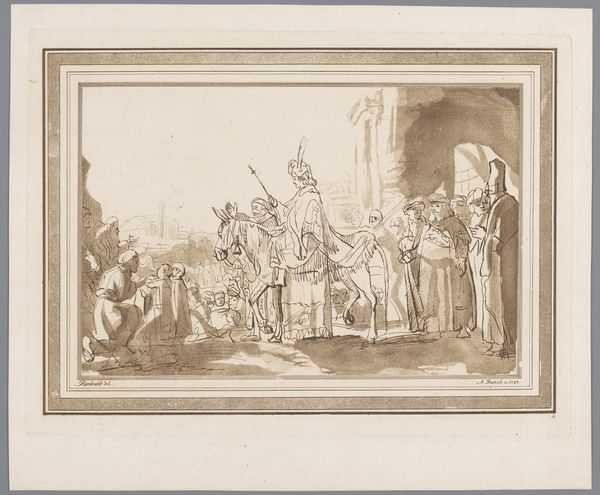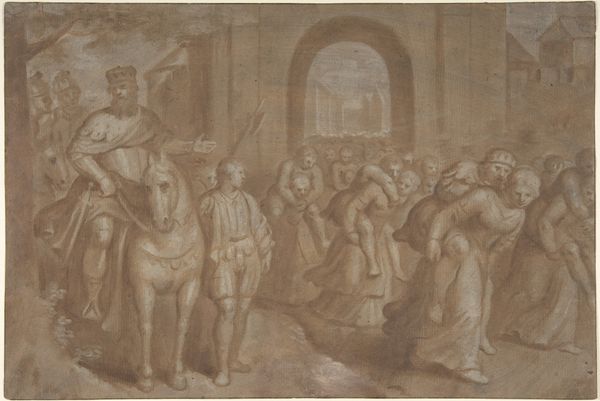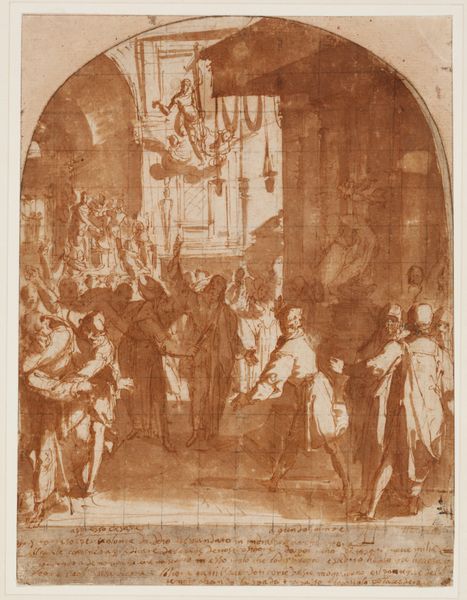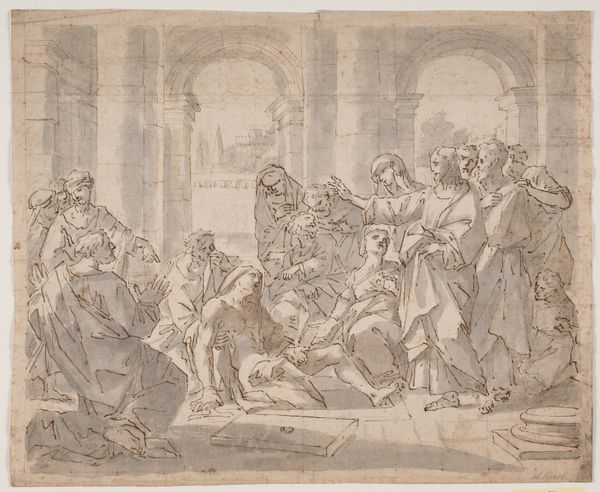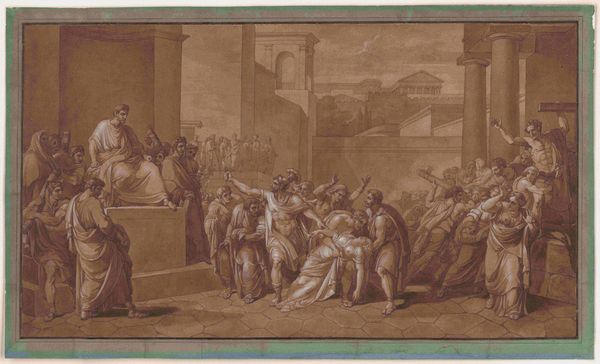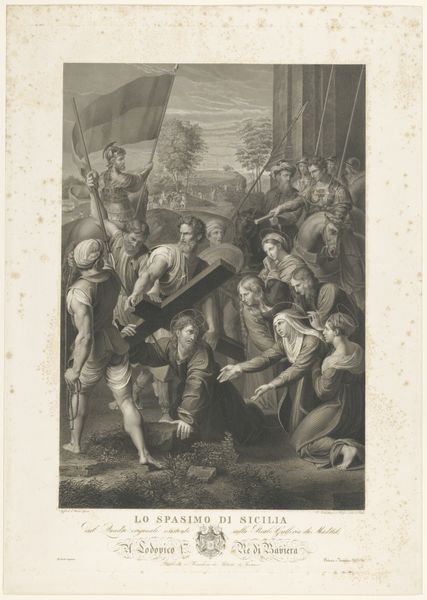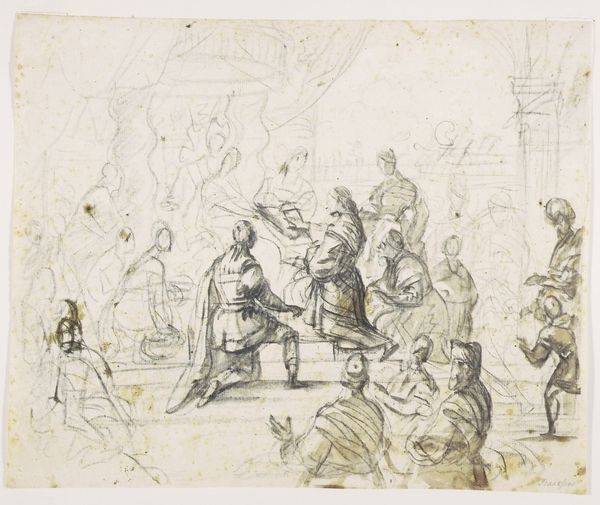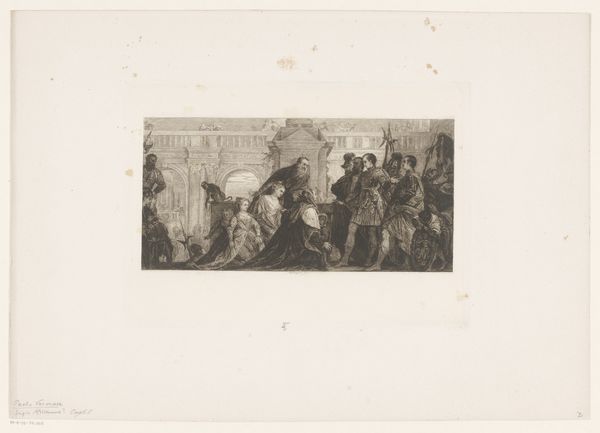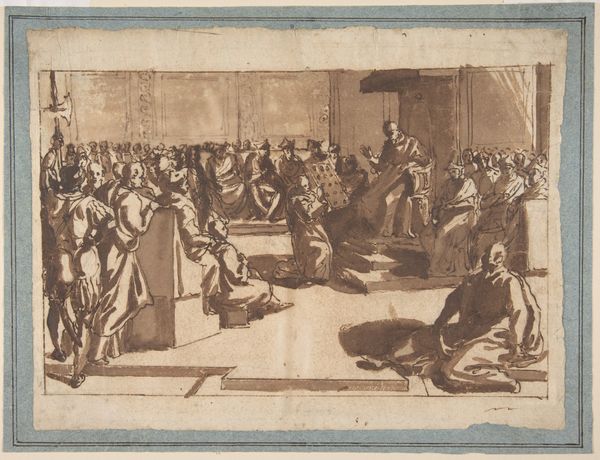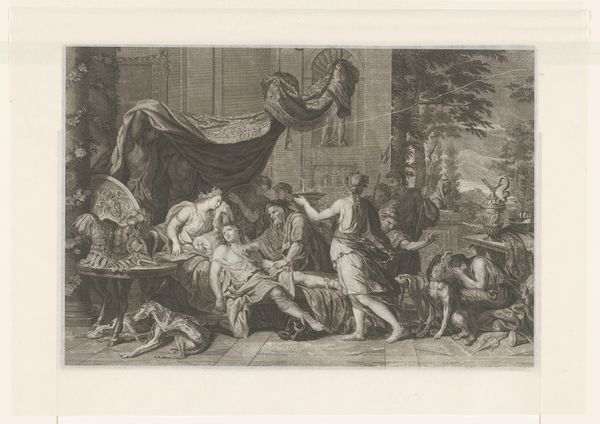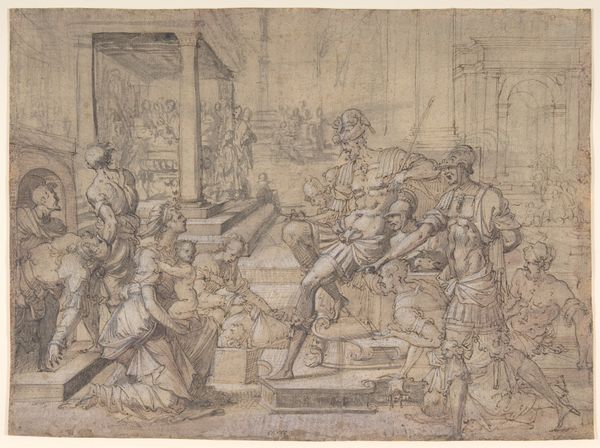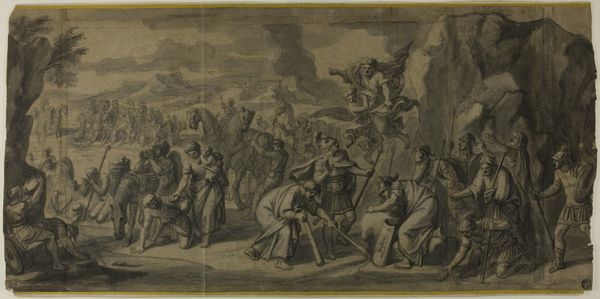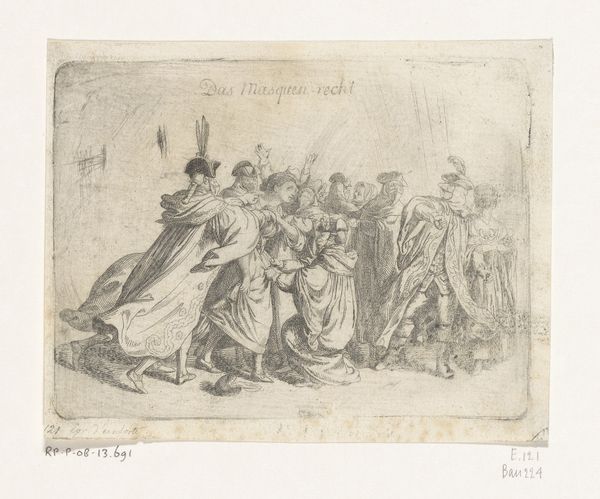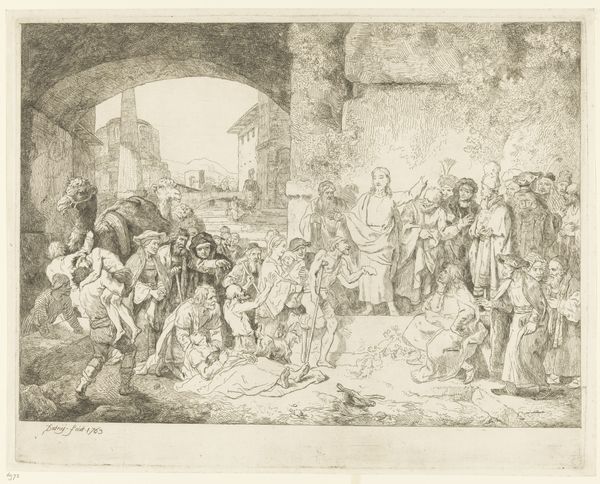
A soldier in armour kneeling in front of an enthroned procurator 1775 - 1825
0:00
0:00
drawing, charcoal
#
drawing
#
narrative-art
#
charcoal drawing
#
figuration
#
11_renaissance
#
charcoal
#
history-painting
#
academic-art
#
watercolor
Dimensions: 283 mm (height) x 298 mm (width) (bladmaal)
Curator: This drawing, titled "A soldier in armour kneeling in front of an enthroned procurator", was created by an anonymous artist sometime between 1775 and 1825. The piece employs charcoal and watercolor techniques, offering a glimpse into narrative and historical themes common in academic art. Editor: The initial feeling I get is one of muted drama, like a play performed behind a scrim. It's fascinating how the artist uses primarily monochromatic tones, creating a sepia world filled with subdued intensity. It evokes for me both ceremony and subjugation at the same time. Curator: That sense of ceremony and subjugation resonates well when we consider the socio-political contexts it reflects. We must consider, who has power and who must be subject to it? It could be seen as exploring power dynamics, obedience, and perhaps even the burdens placed upon those in service, positioning the artwork within the era’s philosophical dialogues around duty and sacrifice. Editor: It’s interesting how the eye is immediately drawn to the kneeling soldier, yet your reading pulls me towards those in the background. The architectural framework—pillars and arches—amplifies that sense of being confined within rigid societal structures, or at least to prescribed modes of artistic expression during this timeframe. You see all these tiny figures and the stage framing suggests an unreal world being watched closely. I get echoes of theater here too. Curator: And there's something interesting too about this positionality – we look through the pillars to more figures; does that positioning mean that the kneeling figure might be more representative than exceptional, enmeshed in systems rather than forging their own story? That interplay is complex, revealing art as enmeshed within power structures, not separate from them. Editor: It does beg the question: Is this drawing ultimately a glorification of power, or a subtle critique? Does this capture the nuances of ambition or quiet desperation of being subject to authority? And the technique. These choices might make it the most engaging aspect: that wash of sepia rendering gives it dreamlike softness at odds with a stern story of governance being laid down here. The tension really brings it to life for me. Curator: Indeed, looking at art is always a kind of conversation. Considering the multiple and intersecting dimensions invites each of us to rethink those established orders. Editor: Precisely! And that, my friend, is where art becomes something wonderfully dangerous: making us think.
Comments
No comments
Be the first to comment and join the conversation on the ultimate creative platform.
